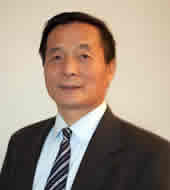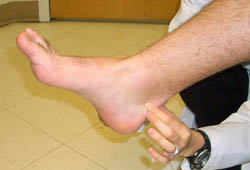Summary
Definition
History and exam
Key diagnostic factors
- insidious onset
- well-localized tenderness
Other diagnostic factors
- pain during activity
- tendon thickening
- tendon nodularity
- crepitus
Risk factors
- athletic training
- unsuitable equipment
- hard and high-friction playing surface
- increasing age
- fluoroquinolone treatment
Diagnostic tests
1st tests to order
- clinical diagnosis
Tests to consider
- ultrasound
- MRI
- x-ray
Treatment algorithm
shoulder with rotator cuff tendinopathy
shoulder with biceps tendinopathy
elbow with lateral epicondylitis
elbow with medial epicondylitis
knee with patellar tendinopathy
knee with quadriceps, iliotibial band, or popliteus tendinopathy
ankle with Achilles tendinopathy
Contributors
Authors
James H-C. Wang, PhD

Professor and Director
MechanoBiology Laboratory
Department of Orthopaedic Surgery
University of Pittsburgh School of Medicine
Pittsburgh
PA
Disclosures
JHW declares that he has no competing interests.
Benjamin B. Rothrauff, MD, PhD
Research Fellow
UPMC Center for Sports Medicine
University of Pittsburgh
Pittsburgh
PA
Disclosures
BBR declares that he has no competing interests.
Kevin J. Byrne, MD
Research Fellow
UPMC Center for Sports Medicine
University of Pittsburgh
Pittsburgh
PA
Disclosures
KJB declares that he has no competing interests.
Acknowledgements
Dr James H-C. Wang, Dr Benjamin B. Rothrauff, and Dr. Kevin J. Byrne would like to gratefully acknowledge Dr Kivanc Atesok, Dr Chad Griffith, Dr Garth N. Walker, Dr Chealon Miller, Dr Paulo H. Araujo, Dr Margaret S. Lo, Dr Márcio Albers, and Dr Freddie H. Fu, previous contributors to this topic. Unfortunately, we have since been made aware that Dr Freddie H. Fu is deceased.
Disclosures
KA, CG, GNW, CM, PHA, MSL, and MA declare that they have no competing interests. FHF declared that he had no competing interests.
Peer reviewers
Per Renström, MD
Professor Emeritus
Karolinska Institute
Stockholm
Sweden
Disclosures
PR declares that he has no competing interests.
Peer reviewer acknowledgements
BMJ Best Practice topics are updated on a rolling basis in line with developments in evidence and guidance. The peer reviewers listed here have reviewed the content at least once during the history of the topic.
Disclosures
Peer reviewer affiliations and disclosures pertain to the time of the review.
References
Key articles
Almekinders LC, Temple JD. Etiology, diagnosis, and treatment of tendonitis: an analysis of the literature. Med Sci Sports Exerc. 1998 Aug;30(8):1183-90. Abstract
Beaudreuil J, Dhénain M, Coudane H, et al. Clinical practice guidelines for the surgical management of rotator cuff tears in adults. Orthop Traumatol Surg Res. 2010 Apr;96(2):175-9.Full text Abstract
Schepsis AA, Jones H, Haas AL. Achilles tendon disorders in athletes. Am J Sports Med. 2002 Mar-Apr;30(2):287-305. Abstract
Kukkonen J, Joukainen A, Lehtinen J, et al. Treatment of nontraumatic rotator cuff tears: a randomized controlled trial with two years of clinical and imaging follow-up. J Bone Joint Surg Am. 2015 Nov 4;97(21):1729-37. Abstract
Reference articles
A full list of sources referenced in this topic is available to users with access to all of BMJ Best Practice.

Differentials
- Rotator cuff tear
- Osgood-Schlatter disease
- Sinding-Larsen-Johansson disease
More DifferentialsGuidelines
- ACR appropriateness criteria: chronic shoulder pain
- ACR appropriateness criteria: chronic elbow pain
More GuidelinesPatient information
Rotator cuff injury
More Patient informationLog in or subscribe to access all of BMJ Best Practice
Use of this content is subject to our disclaimer